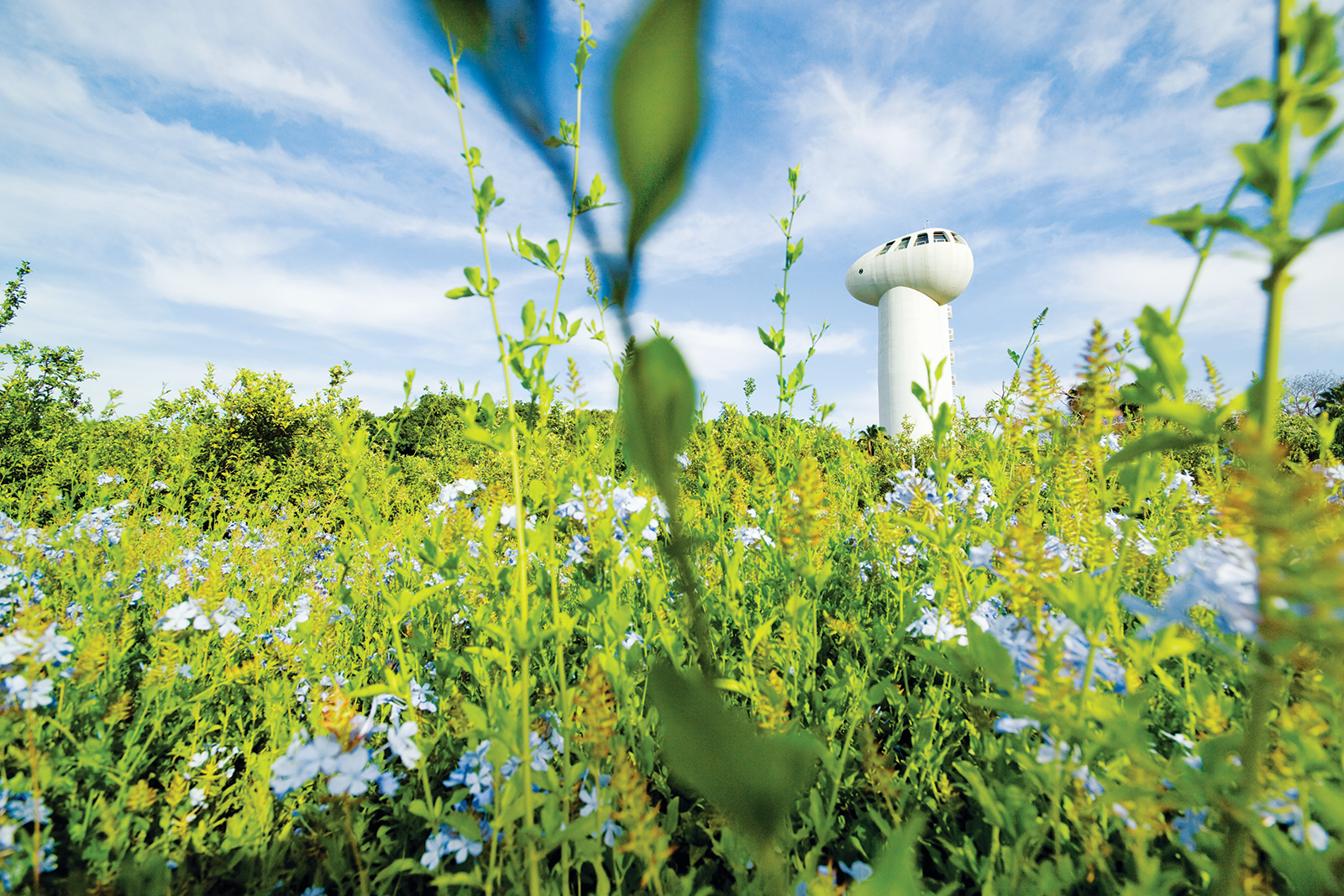
“Look deep into nature, and then you will understand everything better.” - Albert Einstein
In 1962, Rachel Carson's groundbreaking book, "Silent Spring," raised public awareness about ecological issues and influenced the modern environmental movement, setting the stage for the first Earth Day in 1970.
Now, as Earth Day celebrates its 55th anniversary, we are standing at the crossroads of an environmental crisis — and the next 10 years are crucial. To change our trajectory, we need to develop science-driven fundamental breakthroughs that revolutionize how we live. And fast. Thankfully, scientists at the Weizmann Institute are diligently working on advancements to help us all.
At Weizmann’s Institute for Environmental Sustainability, researchers are leveraging cutting-edge technologies and fostering collaborations across diverse fields — including chemistry, biology, mathematics, and physics — to deepen our understanding of ecological systems and develop practical solutions to ensure a sustainable future for our planet. From creating sustainable materials to combating environmental pollutants to feeding an overpopulated world, Weizmann scientists are helping to build a healthier future for generations to come.
These sustainability initiatives even extend to daily life on the Weizmann campus with a new dedicated sanctuary to save endangered plants and a recent commitment to 100% renewable electricity. One scientist has installed carbon sensors on 100 trees across 14 species on campus to continuously monitor carbon uptake.
Read on to learn about 11 exciting new research projects coming out of Weizmann labs that are helping to turn the tide on the environmental crisis — and help save our beautiful Earth.
1. A New, Green, Strong Plastic Substitute
Billions of tons of plastic waste clutter our world. Weizmann researchers have created a biodegradable alternative composite material that could help battle the global plastic waste crisis. This new plastic degrades easily using bacteria and has three major benefits: It’s inexpensive, easy to prepare, and very strong.
Read more >
2. The Invention of a New Sustainable Ceramic Material
Weizmann scientists developed a new ceramic that could replace lead-based electronic components, which are not only toxic but also too small to recycle. This new sustainable material is lead-free, cost-effective, and simple to make. Read more >
3. Building Better Batteries for a Better Tomorrow
Weizmann researchers developed an innovative technique to explore the tiny strands of lithium that form inside rechargeable batteries, which can pose a serious fire hazard. The findings could be used to develop sturdier, stronger, and safer batteries capable of supplying more energy at a lower environmental and economic cost. Read more >
4. Uncrackable: Scorpions and Sponges Inspire Sustainable Design
Weizmann scientists have discovered that ancient creatures like scorpions and sponges have evolutionary traits that can influence design strategies to enhance the resilience of human-made materials. By studying these natural laminates, they found that grading — a gradual change in properties from one layer to another — helps these organisms resist cracks and optimize durability. This insight could lead to more sustainable and efficient materials in engineering. Read more >
5. Harnessing Sunlight for a Cleaner, Greener Future
Weizmann scientists are harnessing sunlight to transform quantum particles into a clean, green, and unlimited energy source. By understanding how particles interact within materials, her work aims to develop intelligent energy conversion methods that contribute to a sustainable future. Read more >
6. Improving Cultivated Wheat by Harnessing the Biodiversity of Wild Wheat
Weizmann scientists are creating technologies to transfer the beneficial traits from wild species of wheat to cultivated varieties. The traits found in wild wheat include the ability to grow with less fertilizer; provide improved nutritional value (more protein); and resist heat, drought, and disease. Helping wheat crops adapt to new conditions is particularly crucial in light of the environmental crisis that endangers the food supply on our planet. Read more >
7. Learning How Trees Adapt to Drought to Improve Agricultural Practices
Weizmann scientists are focusing on how drought affects trees' physiological responses to environmental changes, particularly in semi-arid environments. This research could improve farming practices and contribute to agricultural sustainability in the face of climate change. Read more >
8. Shining a Light on Photosynthesis
Weizmann researchers aim to uncover the mysteries of photosynthesis to more efficiently meet humanity’s needs. These findings may help address questions related to food security, carbon emissions, and climate change. Read more >
9. Monitoring Dry Air Might Help Predict Floods and Save Lives
The monsoon rains that pelt the Indian subcontinent from July to September are devastating, affecting the lives of more than one-sixth of the world’s population. By monitoring dry air, Weizmann researchers have found a way to improve flood warnings in this region, potentially saving hundreds – if not thousands – of lives. Read more >
10. Designing Better Enzymes for a Greener World
In a major step toward greener industry, Weizmann scientists create a method for generating tailor-made enzymes. This discovery could lead to nonpolluting drug manufacturing or the ability to safely break down pollutants, sewage, and agricultural waste, possibly turning them into biofuel or animal feed. Read more >
11. Sea-Based Solutions to Fight Climate Change
Weizmann scientists are creating replicates of natural marine conditions to study bacterial behaviors and their algal hosts. These models reveal new insights into microbial processes and their role in environmental cycles, contributing to a deeper understanding of how microbes affect the environment, especially in the context of climate change. Read more >
Learn more about Weizmann’s Institute for Environmental Sustainability >


